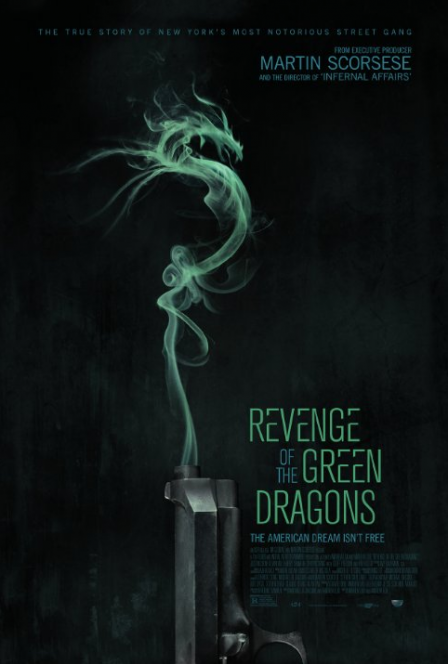For a film eager to graphically portray the violent recesses of a collective criminal mind, Revenge of the Green Dragons is achingly dull. Directors Andrew Lau (Infernal Affairs) and Andrew Loo should be lauded; a film of the Chinese-American struggle, and its ties to the criminal underground, is long overdue. Considering it’s based on a true story, Revenge has a lot going for it. Chief among its privileges is a executive-director tag for Martin Scorsese, who remade Lau’sInfernal Affairs as The Departed. Revenge is a story worthy of Scorsese, except he already told it many times before. The remnants of crime thrillers past float throughout this film, resulting in a staggering missed opportunity.
In Reagan’s America, Flushing’s streets turned mean with the arrival of illegal Chinese immigrants, spurring a new chapter of New York street crime. Circling the underbelly are the Green Dragons, a gang of menacing young men in varsity jackets. We first see them chasing two young illegal immigrants, Sonny (Alex Fox, later by Justin Chon) and Steven (Michael Gregory Fong, later by Kevin Wu) through the streets. There is gleeful mischief in the two brothers’ eyes, while a menacing entitlement burns from the eyes of the Dragons. The Dragons are feared and, thus, admired. The boys are attracted to the underworld: the women, the weaponry, the lucky breaks, the avoidance of the work-a-day immigrant life. Like many of the films Revenge feverishly borrows from, there is always the downfall. A quietly lethal patriarch (Harry Shum Jr.) proves a towering adversary. Gang rivalries turn ugly, heroin gets pushed, bonds are broken. Law enforcement (including a staggeringly underused Ray Liotta as a racist cop) are forced to interfere, and the dream crumbles. It’s not as though these elements cannot be told again, but Loo and Lau offer little to no variety in retelling them.
The marketing of this film has propped it as “in the vein crime classics like Mean Streets and Infernal Affairs.” Its comparison to Infernal Affairs is most accurate; Lau’s reliance on slowmo, quick fades, and melodrama weaken the tangibility and impact of highly disturbing action. Both films also suffer from short time length; Revenge spans several decades and has many players, but doesn’t spend enough time with any of them to make their personalities, bonds, or turmoils effective. At 100 minutes, it’s a victim of its own momentum. Because there is so little character development and fresh writing, the brutal violence undeservedly feels exploitative.
Revenge of the Green Dragons is a true story, based upon Fredric Dannen’s 1992 New Yorker article. Dannen thoroughly covered events not covered in the film, and considering how many retreads are favored by Lau & Loo, it’s a wonder why Dannen’s coverage was given any credit at all. Considering this fractured American Dream is as crucial to Chinese immigration as it has been to Italians, Irish, and Russians, there are ways to set this story apart, but it never happens. Only the names and languages have changed. As a low-budget period piece, Revenge is unable to accurately depict 80s or 90s aesthetics, which is as distracting as its insistence of unnecessarily switching between English and Chinese. Lau and Loo give the story the flash and familiarity to make itself pleasing to the eye, but too shallow to be the epic it sees itself as.

